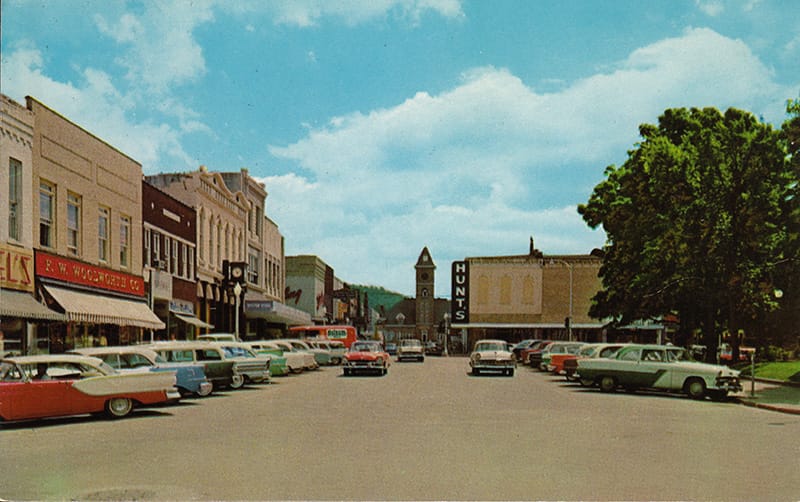

Uh oh...
It appears that you're using a severely outdated version of Safari on Windows. Many features won't work correctly, and functionality can't be guaranteed. Please try viewing this website in Edge, Mozilla, Chrome, or another modern browser. Sorry for any inconvenience this may have caused!
Read More about this safari issue.

Read a few “Best Places to Live” type of lists and you’ll keep seeing the city of Fayetteville listed among the top choices.

This depot, the second built on the spot, stood on Dickson Street at the same location as the current depot building, which is now converted to restaurants. / Postcard from the collection of Charlie Alison
Search back in Fayetteville history and you’ll find that’s been the case for a while. Fayetteville decreased in population only one decade – the 1860s, when the Civil War came to the heart of the town, destroying homes and displacing residents in its wake. But Fayetteville has longed been marked by quirky residents, a beautiful town square and sustained growth, among other charms.
Author Charlie Alison, who has called Fayetteville home for more than 50 years, agrees there’s something special about the town. Perhaps when he graduated from college there weren’t many jobs in this area. He was lucky enough to find one as a reporter at the Northwest Arkansas Times newspaper, and he now serves as an Executive Editor for University Relations at the University of Arkansas. Soon enough, however many of those who went to Little Rock and Dallas to find work in the early 1980s started coming back home. And people just keep coming.
There’s a lot to love about this city on the hill, and Alison hopes he has captured some of it in the new book “A Brief History of Fayetteville,” which debuted earlier this month courtesy of the History Press. “A Brief History of Fayetteville” chronicles many important moments in Fayetteville, starting from its founding in 1828 to the present day.
Alison had the notion of writing the book a decade ago, and he started by pitching the idea to the late John Lewis. The former Bank of Fayetteville president and town scholar got behind the idea. But then Alison, who had recently graduated with a master’s degree in journalism with an emphasis in history, found a job. The project got shelved, at least temporarily. In the meantime, Alison put together a pictorial history of Fayetteville with Ellen Compton and started a website dedicated to Fayetteville history.
When the History Press asked him about two years ago if he knew someone who could write a book about the history of Fayetteville, he knew what to do.
“‘If I don’t write this, someone else will,'” he told himself.
So, he wrote the book, pulling from his research for the website and spending hours at the Fayetteville Public Library, the Special Collections department of the University of Arkansas and reading through “Flashback,” a publication of the Washington County Historical Society.
What he found was a portrait of a strong, resilient town. The city not only bounced back from the Civil War but also from a tornado in 1880 that flattened parts of the Fayetteville Square and traveled up Mount Sequoyah. At least two people were killed, and many businesses were destroyed.
We do the work.
You check your email.
Sign up for our weekly e-news.
Get stories sent straight to your inbox!







Like this story? Read more from Fayetteville Flyer - Kevin Kinder
Sports are great! They give us commonality, a shared experience that...
In a story told by Alejo Benedetti, the concert photographers Jim...
Coming to the Walmart Arkansas Music Pavilion in 2025 is a lineup...
Join the Conversation
Leave a Comment